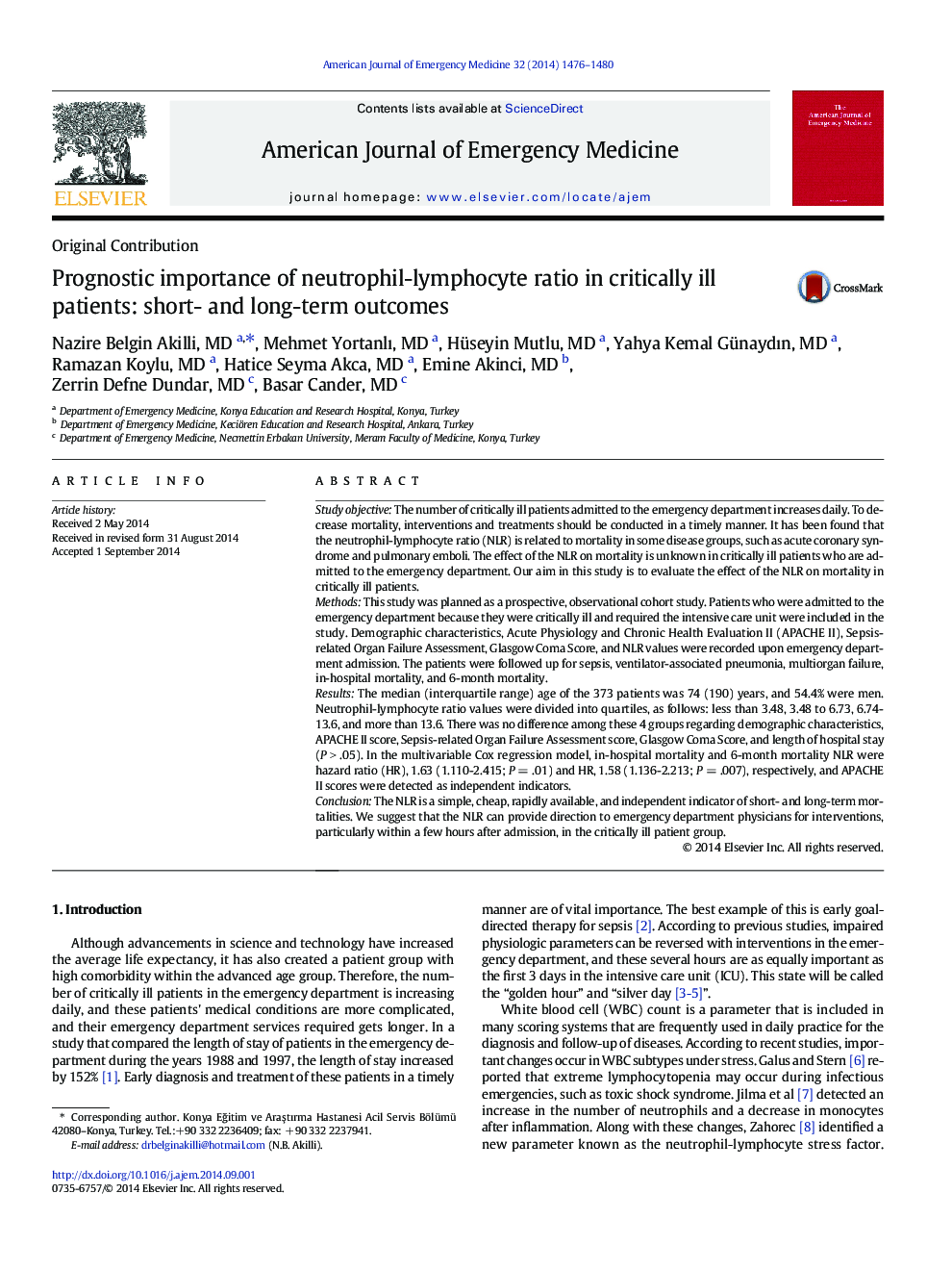| کد مقاله | کد نشریه | سال انتشار | مقاله انگلیسی | نسخه تمام متن |
|---|---|---|---|---|
| 3224072 | 1588111 | 2014 | 5 صفحه PDF | دانلود رایگان |
Study objectiveThe number of critically ill patients admitted to the emergency department increases daily. To decrease mortality, interventions and treatments should be conducted in a timely manner. It has been found that the neutrophil-lymphocyte ratio (NLR) is related to mortality in some disease groups, such as acute coronary syndrome and pulmonary emboli. The effect of the NLR on mortality is unknown in critically ill patients who are admitted to the emergency department. Our aim in this study is to evaluate the effect of the NLR on mortality in critically ill patients.MethodsThis study was planned as a prospective, observational cohort study. Patients who were admitted to the emergency department because they were critically ill and required the intensive care unit were included in the study. Demographic characteristics, Acute Physiology and Chronic Health Evaluation II (APACHE II), Sepsis-related Organ Failure Assessment, Glasgow Coma Score, and NLR values were recorded upon emergency department admission. The patients were followed up for sepsis, ventilator-associated pneumonia, multiorgan failure, in-hospital mortality, and 6-month mortality.ResultsThe median (interquartile range) age of the 373 patients was 74 (190) years, and 54.4% were men. Neutrophil-lymphocyte ratio values were divided into quartiles, as follows: less than 3.48, 3.48 to 6.73, 6.74-13.6, and more than 13.6. There was no difference among these 4 groups regarding demographic characteristics, APACHE II score, Sepsis-related Organ Failure Assessment score, Glasgow Coma Score, and length of hospital stay (P > .05). In the multivariable Cox regression model, in-hospital mortality and 6-month mortality NLR were hazard ratio (HR), 1.63 (1.110-2.415; P = .01) and HR, 1.58 (1.136-2.213; P = .007), respectively, and APACHE II scores were detected as independent indicators.ConclusionThe NLR is a simple, cheap, rapidly available, and independent indicator of short- and long-term mortalities. We suggest that the NLR can provide direction to emergency department physicians for interventions, particularly within a few hours after admission, in the critically ill patient group.
Journal: The American Journal of Emergency Medicine - Volume 32, Issue 12, December 2014, Pages 1476–1480
